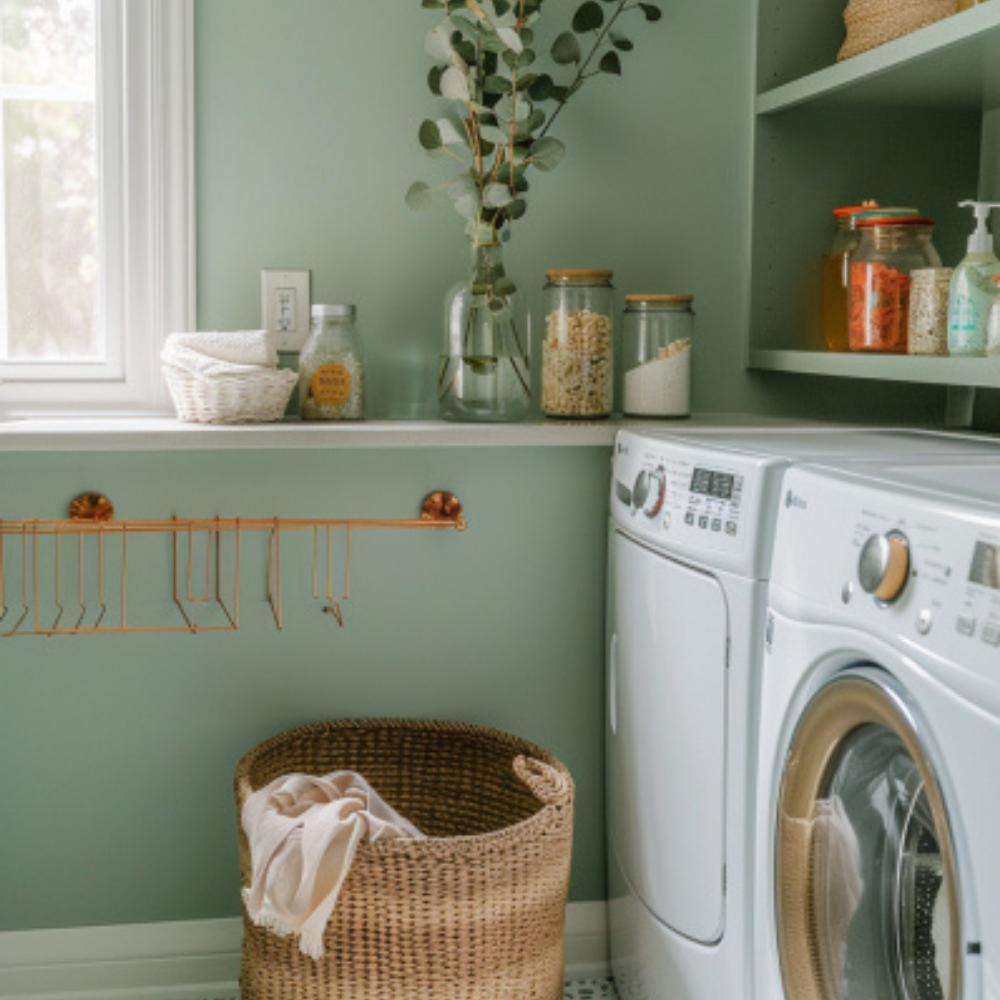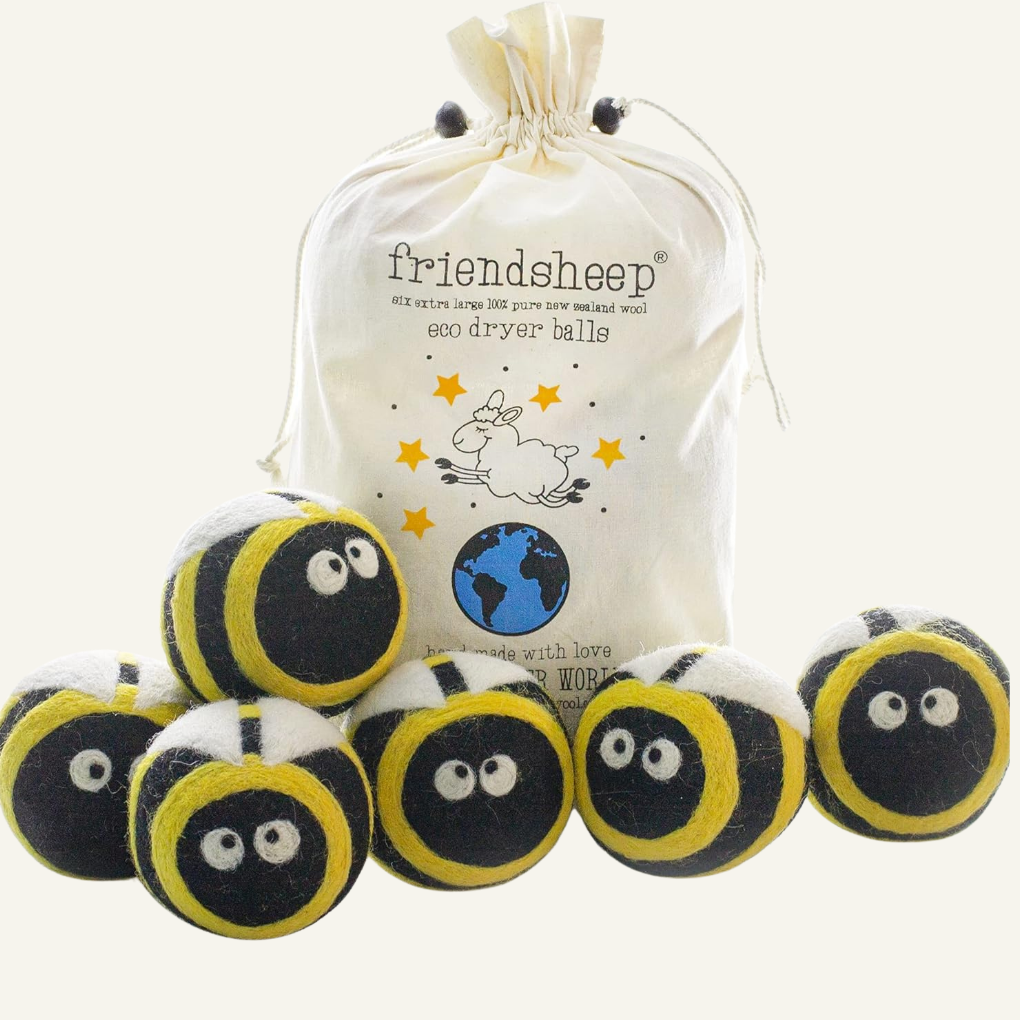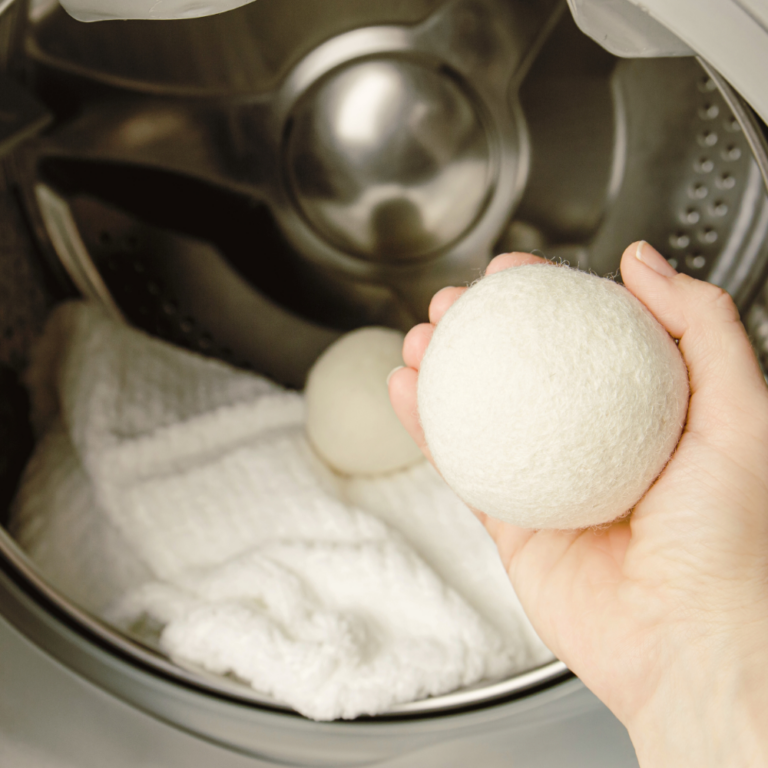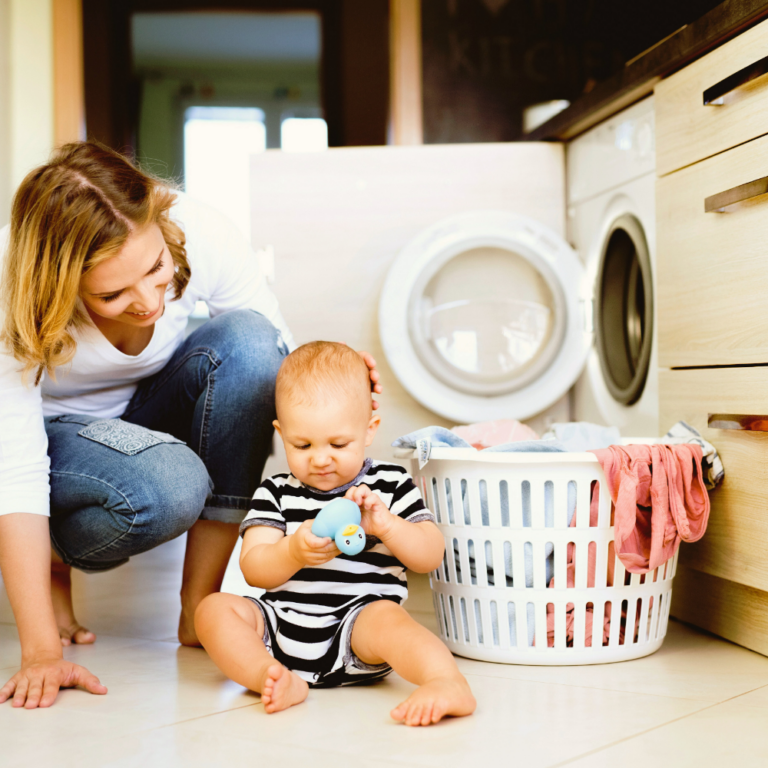
Key Takeaways
- Eco-friendly laundry hacks save water, energy, and money while keeping clothes in great shape.
- Switching to natural detergents and washing in cold water reduces toxic chemicals and lowers your carbon footprint.
- Simple changes like air-drying, running full loads, and using microfiber catchers protect the planet from excess waste and microplastic pollution.
Did you know that each load of laundry can use up to 40 gallons of water, and most of the energy goes straight into heating it? Multiply that by the hundreds of loads a household does each year, and suddenly, wash day looks less like a chore and more like a hidden environmental drain.
The best part? A few simple tweaks are all it takes to save money, cut down on waste, and keep your clothes in great shape. These 10 eco-friendly laundry hacks show how little changes on wash day can make a big difference—for your wallet and for the planet.
Why Choose Eco-Friendly Laundry Detergents?
Most conventional laundry detergents rely on synthetic chemicals and artificial fragrances. While they get clothes clean, they can also leave behind a bigger mess: polluted waterways, plastic packaging waste, and even skin irritation from harsh ingredients. In fact, certain detergents have been banned in places like New York because of cancer-causing substances such as 1,4-dioxane.
Eco-friendly detergents flip the script. They’re made with biodegradable, non-toxic ingredients that are safer for your skin and gentler on the planet. Many come in plastic-free packaging or refillable formats, cutting down on waste. By choosing greener options, you’re not just protecting your clothes—you’re helping keep harmful chemicals out of rivers, oceans, and your own home.
What Makes a Laundry Detergent Eco-Friendly?
Not every “green” label on the shelf is telling the truth. To know if a detergent is truly eco-friendly, look for these key features:
- Biodegradable ingredients that break down safely in the environment.
- No optical brighteners, which only make clothes look whiter and can harm aquatic life.
- No artificial fragrances or dyes that may cause skin irritation.
- Plant-based surfactants from renewable sources like coconut or corn are a viable alternative to petroleum-based surfactants.
- Opt for minimal or compostable packaging, such as cardboard boxes, refill pouches, or tablets, instead of heavy plastic jugs.
❌ Ingredients to Avoid
When scanning labels, steer clear of these common culprits:
- Sodium lauryl sulfate (SLS) – harsh on skin and harmful to waterways.
- Phthalates – hidden in synthetic fragrances and linked to health risks.
- Nonrenewable petrochemicals – fossil fuel–derived ingredients with a high carbon footprint.
Choosing detergents that meet these standards helps keep your clothes fresh without adding extra pollution to your home—or the planet.
The Importance of Eco-Friendly Laundry Routines
Eco-friendly laundry routines are crucial for reducing the environmental impact of doing laundry. By opting for sustainable practices, we contribute to less water and energy consumption, ultimately decreasing our carbon footprint.
Small Steps, Big Impact
Laundry day is getting a green makeover, and it’s turning into a trend worth embracing. Instead of the usual chemical-laden detergents, more people are reaching for natural alternatives. Not only are they making their homes safer, but they’re also keeping harmful pollutants out of our waterways—every load making a difference.
Let’s talk about energy. Switching from hot to cold water in your washing machine can result in substantial energy savings each year. It’s like giving your clothes a fresh clean while giving the planet a well-deserved boost.
Then there’s the simplicity of air drying. By choosing to air dry instead of using a tumble dryer, you’re slashing energy consumption and reducing your carbon footprint. It’s a small adjustment that leads to big results, showing that everyone can contribute to protecting our Earth, one laundry load at a time.
✨tips
Switching to Green Laundry Products
Making the switch to eco-friendly laundry products doesn’t have to be complicated, but giving your machine and clothes a fresh start helps things go smoothly. Here’s how to make the transition easier:
🧴Prep Your Washer
Think of this as a reset for your machine. Before switching to natural detergents, run an empty hot cycle with a cup of white vinegar. This helps flush out leftover detergent residue, softener gunk, and artificial fragrances that could interfere with your eco-friendly clean. Once the buildup is gone, your washer is ready to do its job more efficiently.
💧Adjust for Hard Water
If you live in an area with hard water, you may notice that eco-friendly detergents don’t foam as much. That doesn’t mean they aren’t working; it means minerals in the water are interfering with their function. A half cup of baking soda in the wash or a splash of vinegar in the rinse cycle can soften the water, boost cleaning power, and leave clothes feeling fresh.
⏳Give It Time
Don’t be surprised if your clothes feel a little different at first. Fabrics may shed the chemical coatings left behind by conventional detergents, and you’ll start to notice a cleaner feel without the heavy perfumes. After a few washes, you and your machine will be fully adjusted to the switch.
10 Tips for an Eco-Friendly Laundry Routine
Are you tired of wasting energy and harming the environment every time you do your laundry? It’s time to make a change. Read on to discover 10 simple and practical tips for transforming your laundry routine into an eco-friendly one.
1. Wash Less Often

Maintaining your clothes by washing them less frequently is a straightforward strategy to create a more environmentally conscious laundry routine. Denim giant Levi’s recommends cleaning your jeans only after every ten uses compared to the US norm of roughly every 2.3 uses.
This practice not merely conserves water and energy but also prolongs the lifespan of your clothes.
This method reduces the number of laundry batches, lessens the wear on fabric softeners, and decreases hot water use. By designating days to launder more extensive batches, we contribute positively to our environment little by little.
Consider this: fewer washing cycles translate to conserving copious volumes of water and diminishing energy consumption over time. Hence, it’s a mutually beneficial scenario for cleanliness and environmental conservation.
2. Run Full Loads
Running full loads in your washing machine is a smart move for both the environment and your wallet. Here’s why:
Water Conservation: Waiting until you have a full load of laundry makes the most of your water usage. A full load typically uses less water per item compared to smaller loads, helping you conserve water.
Energy Efficiency: Each washing machine cycle consumes energy. When you wash smaller loads, the energy used per item stays the same. However, by combining those smaller loads into a full load, you reduce the energy consumption per item. Washing machines operate more efficiently when fully loaded.
Cost Savings: Fewer cycles mean lower energy bills. Over time, the savings from running full loads can add up. Additionally, you’ll reduce the wear and tear on your machine, potentially extending its lifespan.
3. Learn the Laundry Care Symbols

Knowing laundry care symbols is essential for caring for your clothes. These symbols guide you in washing, drying, and ironing your garments without damaging them. For instance, a square symbol with a circle inside means the garment can be tumble-dried.
A triangle symbol indicates that bleach can be used on the fabric if needed. Understanding these symbols can help you ensure that your clothes are washed and cared for correctly. RealSimple.com has a comprehensive breakdown of these symbols here.
Understanding laundry care symbols helps maintain clothing quality and prevent accidental damage during laundering. These symbols provide crucial information for keeping your wardrobe in good condition while simplifying the laundry process. They also indicate whether an item needs to be hand-washed or is safe to iron.
4. Use a Eco-Friendly Laundry Detergent
When it comes to choosing the best laundry detergent, opting for natural options is not just about getting clean clothes—it’s about making choices that are safer for your family and the environment. Natural laundry detergents provide a powerful clean without the use of harmful chemicals, making them an ideal choice for those who are conscious of both their health and their impact on the planet.
Blueland is a prime example of a brand that embodies this commitment to natural and eco-friendly laundry solutions. Their laundry detergent tablets are designed to be effective while also prioritizing the environment. Unlike traditional detergents that come in plastic pods or sheets, Blueland offers a convenient tablet format that eliminates the need for plastic packaging. These tablets are formulated without harmful chemicals like parabens, VOCs, ammonia, phthalates, chlorine, and bleach, ensuring a safer laundry experience.

In addition to being chemical-free, Blueland’s packaging is entirely compostable, further reducing environmental impact. But their commitment doesn’t stop there. Blueland has taken an active role in advocating for stricter regulations on polyvinyl alcohol (PVA), a water-soluble polymer often found in laundry products. Research supported by Blueland highlighted the potential environmental hazards of PVA, which can break down into plastic particles and enter the ecosystem. This advocacy led to the introduction of a bill in New York City that seeks to ban PVA-containing laundry and dishwasher products by 2026, marking a significant step towards reducing microplastic pollution.
Blueland’s efforts demonstrate a strong dedication to sustainability and show that it’s possible to achieve a powerful clean without compromising the health of our planet. By choosing natural laundry detergents like those offered by Blueland, you’re making a choice that benefits both your home and the environment.
Don’t Miss: Best Eco-Friendly Laundry Detergents Ready to swap your detergent for something safer and greener? Check out our top picks for eco-friendly laundry detergents that actually work. Read more →5. Wash on Cold
Heating water requires energy, and about 75 percent of the energy used in a laundry load is used for this task. By switching to cold water, you can conserve energy and reduce the strain on electricity grids. Plus, it can lead to noticeable savings on your utility bills. According to a recent estimate from Consumer Reports, using a cold-water detergent and setting your machine to 60 degrees Fahrenheit instead of 75 could save you at least $60 per year.
Washing four out of five loads in cold water can eliminate 864 pounds of CO2 emissions annually equivalent to planting 0.37 acres of U.S. Forest, according to the American Cleaning Institute.
It’s an easy change that can have significant benefits.
So, next time you do laundry, consider washing it cold instead of warm or hot. You’ll be doing something good for your wallet and the planet.
6. Use a Delicates Bag

Use a delicate bag to safeguard your fragile items from damage when laundering. This basic measure minimizes friction and prolongs the lifespan of your clothes, allowing you to cherish them for a longer period while reducing the necessity for substitutes.
Embracing this approach in your laundry regimen is a simple method to adopt sustainable habits and be conscious of environmental impact.
This uncomplicated resolution shelters your fragile attire during machine washes, preserving its standard and look. By employing a delicate bag, you advocate sustainability in your laundry practices and take small yet significant steps toward eco-friendly living.
7. Use a Microfiber Catcher
A microfiber catcher is one way to help the environment when doing laundry. These catchers are crafted to capture tiny strands of fabric, known as microfibers, that shed from synthetic fabrics during washing.
By trapping these microfibers, you can prevent them from entering water systems and contributing to plastic pollution. Guppyfriend bags exemplify a microfiber catcher that effectively reduces shedding and thus aids in protecting our environment.
Microfibers account for up to 35 percent of all plastic pollution in the oceans, according to Ocean Clean Wash, a campaign by the Plastic Soup Foundation. These tiny plastic particles are often mistaken for food by marine life, posing a serious threat to the natural ecosystem.
Are you soaking in warm water? A product that effectively traps those tiny strands could solve this common concern about making your laundry routine more eco-friendly.
Don’t Miss: Microplastics: Health Risks, Sources, and How to Reduce Exposure Laundry is one of the biggest sources of microplastic pollution. Discover how these tiny plastics affect your health and what you can do to limit exposure. Read more →8. Hang-Dry Whenever Possible
Skipping the dryer isn’t just old-fashioned, it’s one of the simplest ways to save energy at home. Clothes dryers are among the biggest energy users in most households, and air-drying even part of your laundry can cut electricity use by hundreds of kilowatt-hours per year. That means lower bills and a smaller carbon footprint.
Hang-drying also helps your clothes last longer since they aren’t exposed to high heat and rough tumbling. Whether you use a drying rack indoors or a clothesline in the sun, it’s a low-effort swap with a big payoff for your wallet, your wardrobe, and the planet.
9. Clean Your Lint Trap and Dryer Vent
Regular lint trap and dryer vent maintenance is vital for both safety and efficiency. Here’s why:
Lint Trap Cleaning:
- After each load, clear out the lint from the lint trap. This simple step prevents airflow blockage, ensuring your dryer runs efficiently.
- Efficient drying not only shortens the drying time but also cuts down on energy usage.
Dryer Vent Cleaning:
- Skipping vent maintenance can significantly raise the chances of a dryer-related fire.
- Equally important is cleaning the dryer vent. Aim to do every two years or more often if necessary.
- A clogged vent can restrict airflow, leading to longer drying times and increasing the risk of fire.
10. Ditch Dryer Sheets for Natural Wool Dryer Balls

To reduce your environmental impact, consider switching to natural wool dryer balls. With these Friendsheep dryer balls, you will smile each cycle. Unlike traditional dryer sheets, these offer a sustainable and cost-effective option that can decrease drying time by 10-25%.
Wool dryer balls also soften clothes without relying on harmful chemicals or synthetic fragrances. Using wool dryer balls is an effortless way to adopt eco-friendly laundry practices while saving money and energy.
By making this simple switch, you’ll decrease waste and make a positive contribution to the environment. This small change can significantly benefit your laundry routine and the planet overall.
Don’t Miss: Dryer Balls vs. Dryer Sheets Curious which option really comes out on top? See our full breakdown of dryer balls vs. dryer sheets and find the best choice for a greener laundry routine. Read more →FAQs on Eco-Friendly Laundry
A genuinely eco-friendly detergent is made from biodegradable, plant-based ingredients, contains no artificial fragrances, dyes, or optical brighteners, and is free from harmful chemicals like phosphates, SLS, and phthalates. Look for options with minimal or compostable packaging and third-party certifications such as EPA Safer Choice or EWG Verified.
Yes, many natural detergents clean just as well as traditional brands, especially for everyday laundry. For tough stains, you may need to pre-treat or use boosters like baking soda, but most eco-friendly detergents provide a powerful clean without the harsh chemicals.
Washing synthetic fabrics releases microfibers that can pollute waterways. To minimize this, use a microfiber catcher (such as a Guppyfriend bag), wash full loads, and choose lower spin speeds. Whenever possible, opt for natural fiber clothing.
Homemade detergents using ingredients like baking soda, washing soda, and castile soap are popular, but results can vary. Some DIY recipes may not be suitable for all washers or fabrics, so research and test carefully before switching completely. If you’re curious, check out our Homemade Laundry Detergent Guide for safe, simple recipes to try.
Skip chemical softeners and try adding half a cup of baking soda to the rinse cycle, or use wool dryer balls. These options naturally soften fabrics without leaving residues or harming the environment.
Yes, many green detergents are HE-compatible. Check the label to ensure it’s safe for your machine, and use the recommended amount to prevent excess suds.
Final Thoughts on Eco-Friendly Laundry
Making your laundry routine eco-friendly doesn’t require a complete overhaul—just a few thoughtful changes. By choosing natural detergents, washing in cold water, running full loads, and embracing simple hacks like hang-drying and using wool dryer balls, you can significantly reduce your environmental impact with every wash. These habits not only protect our planet but also help your clothes last longer and can even save you money over time.
Remember, every small step counts. Whether you start by switching to an eco-friendly detergent or commit to air-drying more often, your efforts add up. Together, we can make laundry day a win for both our wardrobes and the world. Ready to join the movement for a cleaner, greener future? Start with your next load.
📚References
- American Cleaning Institute. (n.d.). Cold water saves. American Cleaning Institute. Retrieved September 14, 2025, from https://www.cleaninginstitute.org/industry-priorities/outreach/cold-water-saves
- American Cleaning Institute. (2016). Benefits of using cold water for everyday laundry in the U.S. [Technical brief]. The Sustainability Consortium & American Cleaning Institute. https://www.cleaninginstitute.org/sites/default/files/assets/1/Page/Cold-Water-Wash-Technical-Brief.pdf
- Consumer Reports. (2021, May 28). 10 ways to save energy doing laundry. Consumer Reports. https://www.consumerreports.org/appliances/laundry/energy-saving-laundry-tips-a9261296729/
- Consumer Reports. (2023, April 18). Save more—and waste less in the laundry room. Consumer Reports. https://www.consumerreports.org/money/saving-money/save-more-and-waste-less-in-the-laundry-room-a3619656182/






